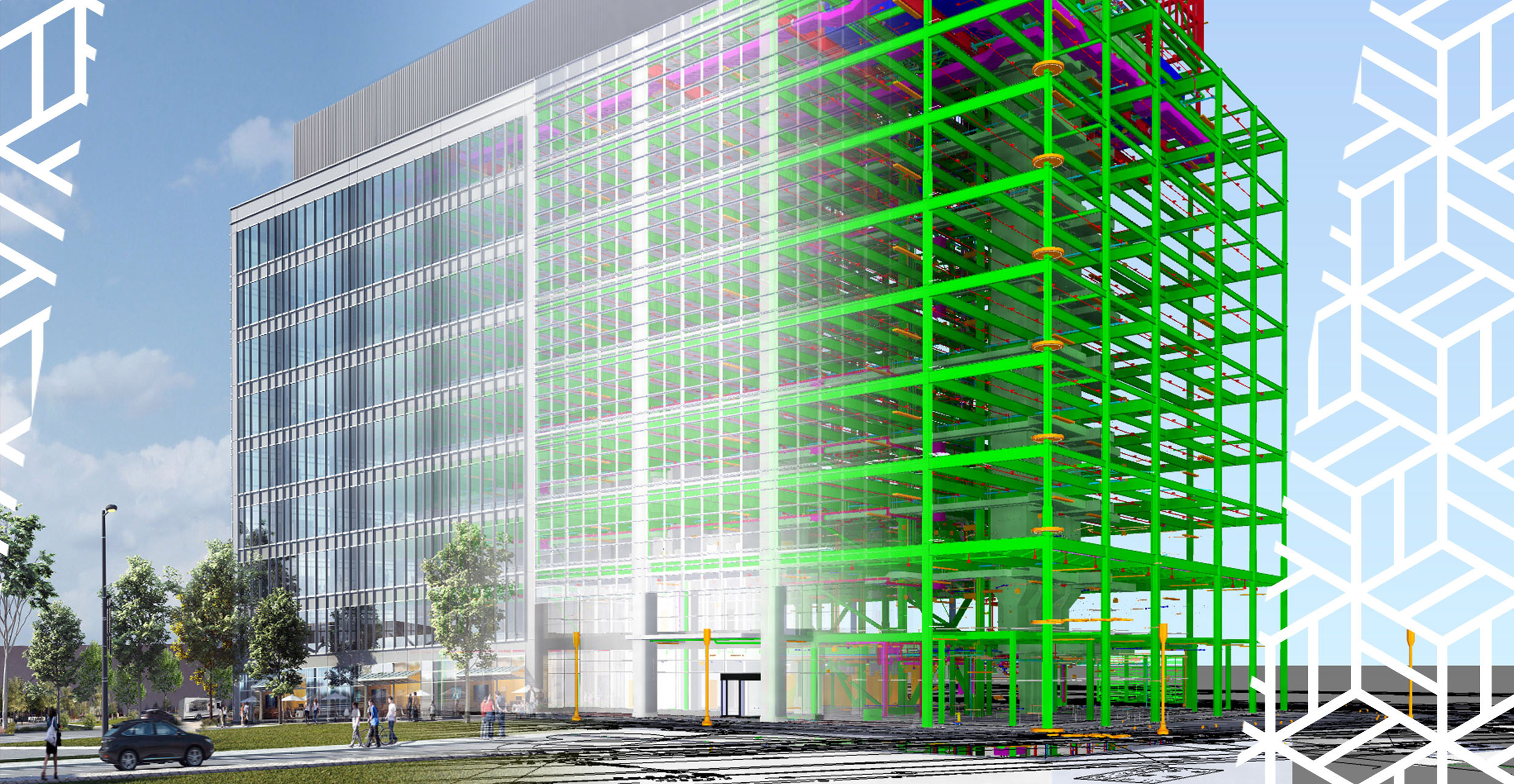In this story contributed to Construction Tech Review, Shawmut’s Senior Director of Engineering Services Tom Perry reveals a newly rolled out model—powered by BIM-enabled technology—that is bridging the gap between design and construction through a heightened, concentrated partnership between the firm, designers, and subcontractors.
Technology has continuously enabled industries to shift towards a smarter future. The construction industry is no different. New-age technology is powering more safe, efficient, and collaborative projects than ever before—and it begins long before anyone even steps foot on a jobsite.
At Shawmut, our commitment to a better building experience is demonstrated by our investment in innovative technologies—and at the core is Building Information Modeling (BIM). Far more than technologically-advanced software, BIM enables our teams to build digitally first—transforming architectural drawings into 3D models that represent precise details of a project and surpass traditional blueprints or sketches. This level of detail allows our teams to not only identify challenges and find solutions before construction even begins, but also drives a more collaborative, transparent relationship among project partners.
With a commitment to setting projects up for success, BIM allows our teams to simulate the entire construction process. Integrating this technology upfront during pre-construction allows us to view, investigate, and generate an innovative approach to building efficiently and safely.
To fully harness BIM’s capabilities, we understand the technology shouldn’t just be used by one or two stakeholders. What if we engage more partners more quickly on projects? We do—and we call it the Construction Gap Model. At its core, the first-of-its-kind model seamlessly bridges the design and construction process through a heightened, concentrated partnership—engaging subcontractors during pre-construction to bring all key stakeholders to the table from the get-go—construction manager, design team, and subs. The subcontractors are part of the conversation, making effective changes to documents that prevent redesigns.
This level of transparency and engagement from pre-construction through post-construction empowers us to drive effective, efficient modifications to designs, ensuring the feasibility and constructability of a project. That means identifying potential problems and generating solutions—reducing building cost and minimizing construction time. It also means driving safety by reducing potential risks and hazards through more advanced, precise pre-planning.
We’re seeing the effectiveness of the Construction Gap Model at UMass Medical School’s new education and research building—a nine-story, 350,000 square-foot biomedical complex in Worcester, Massachusetts. Here, we’re leveraging the model to coordinate complex construction solutions by establishing constructable documents from the start. From the prefabrication of the façade to panel boards and HVAC systems, the model is driving an ultra-efficient approach to building with a certainty of outcome our partners have come to expect from us.
This same approach to upfront collaboration and transparency can also be seen in new leading-edge technology we’re piloting—and the unique way we’re leveraging it. BIM Track, a digital platform for BIM coordination also deployed at our UMass Medical School project, is providing our teams with web-based data solutions. By using the software in tandem with the design team, we allow for an always-open communication loop for accessing, reviewing, editing, and tracking complications anywhere at any time. Through this multi-purpose and collaboratively editable data, the technology is driving accountability and producing solutions in real-time.
By harnessing the powering of BIM, we’ve launched a leading-edge Construction Gap Model, expanded on our in-house offerings, and piloted pioneering technologies—optimizing these innovations to deliver on our promise of a better building experience.
See the article on Construction Tech Review here.
